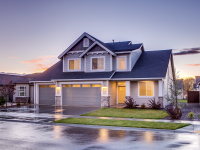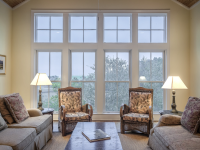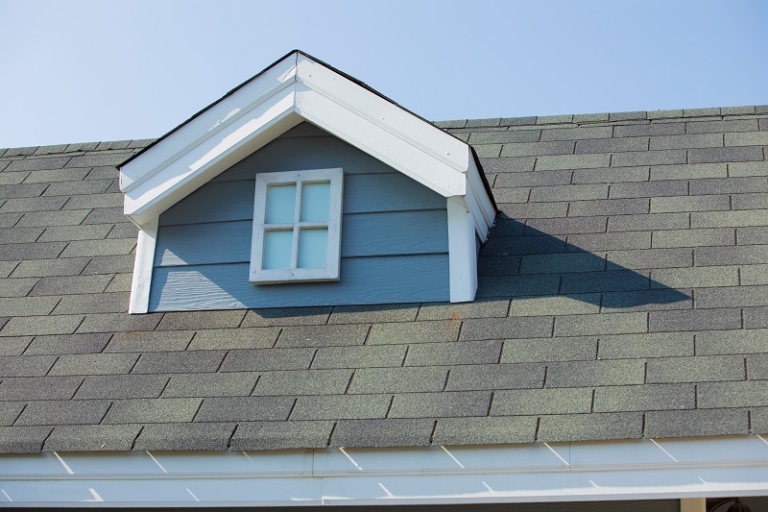A roof is something most homeowners take for granted. Thanks to being mostly out of sight, out of mind, It’s one of those things that you never think about until it starts to leak in a noticeable way or an unexpected windstorm damages your house. However, believe it or not, the average American roof lasts about 20 to 30 years so long as it’s treated with good care and proper maintenance. That being said, while 20 years is a long time, there still comes a time when it’s best to start the replacement process when even repairs won’t cut it anymore. If you think you’re roof’s time has come but you’re not sure of the signs, here are five of them that might mean it’s time to replace your shingle roof.
Curling Shingles
Curling shingles are never a good sign, as they can be a sign of age or a ventilation issue. As your roof ages, the shingles will start to come loose and begin to curl as moisture is absorbed into the rest of your roof. Curling can also be an indicator of poor-quality roofing materials, so no matter what if you see your shingles curling you know there’s a problem on your hands.
Whether the roof is reaching the predicted end of its life, or you notice your shingles curling a few months in, it’s important to get a jump on taking care of your roof the moment you see them begin to bend. Especially if the curled or blistered shingles make up a quarter of your roof’s surface. The sooner you replace the shingles, the sooner your roof will be back in shape.
Moss Growth
Moss can grow on any roof in the proper conditions, and while a pretty sight, also possibly a major problem. Moss growth can impede the flow of water on your roof, meaning that when it rains it can be difficult to remove the rainwater from the roof and filter it into the gutter thanks to all the plant growth. As a result, the roof will be damp for far longer than it should be, and the resulting water damage is what can break down your roof faster than if there were no moss at all.
One of the first steps you can try is an anti-moss treatment, such as a half-and-half mixture of laundry-strength chlorine bleach and water. You can spray the mixture on the moss and then rinse everything off with a pressure washer. Another option is to spray vinegar if you’re uncomfortable with using bleach on your roof. There are also many moss-killing products out there to try. If you don’t think what you’ve done has been sufficient, or perhaps you don’t have the time, roof cleaning companies can be hired to clear it away.
Missing Shingles
If you find a few shingles missing or damaged on your roof, it does not necessarily cause concern. If this is the case, it’s best to get the damaged or missing shingle spaces repaired quickly to avoid the kind of damage that can happen when they’re not present. However, if this is a common occurrence, or your roof was old anyway, it’s likely better to look into a replacement instead. After all, the older a roof is then the more wear and tear it’s endured, and that includes the nails and staples holding your shingles to the roof.
Age of the Roof
Shingle roofs may last 20 or 30 years when treated correctly, so if your roof is pushing the 30-year mark it might be time to start preparing for a replacement. Even if it’s not showing any outward damage, a much-needed update may be needed to help with the areas of the roof you can’t see. Roofs are built to last a long time and endure a lot because they’re exposed to the elements and are constantly assaulted by weather conditions such as rain, snow, sleet, hail, sun, wind, and more. Thus, after a few decades of being outside and taking a beating from the weather, it’s best to keep a roof replacement project in the back of your mind in order to continue maintaining not only the roof but your entire house.
Roof Punctures
One of the most extreme examples of damage to a roof is a roof puncture is exactly what it sounds like: a large hole in your roof. Punctures are created thanks to a combination of weight and sharp pressure being applied to the roof in a small, confined area (imagine the superhero getting thrown into a roof in the movies).
That being said, this is also a type of damage where you might try or think about trying to repair it first. After all, there are patching methods out there to fix punctures. If the damage is affecting anywhere around thirty percent of the roof though, it’s better to just get it replaced in order to avoid structural integrity problems. A good rule of thumb for any roof problem is that if the damage is minor, then attempting a repair is likely the way to go. If the damage is serious and covers most or a decent percentage of the roof though, it’s much safer, and likely less expensive, to just replace everything and start anew.
Maintaining a home is not a cheap investment, especially when you consider the cost of replacing and replacing more vulnerable areas such as windows, doors, walls, and roofs. Thanks to the simple fact of aging and wear and tear, all these things will eventually need some form of serious maintenance or update, maybe even replacement, in order to continue serving their purpose. The same goes for your roof. Your roof protects you, your belongings, and the entire rest of the house from moisture damage as well as helps keep things cool in hot weather and warm in cold weather. As a result, when you know the roof has been through the wringer and repairs won’t cut it anymore, it’s likely wise to go ahead and replace your roof so it can continue doing its job, and before it becomes a problem that affects the rest of the house.


















